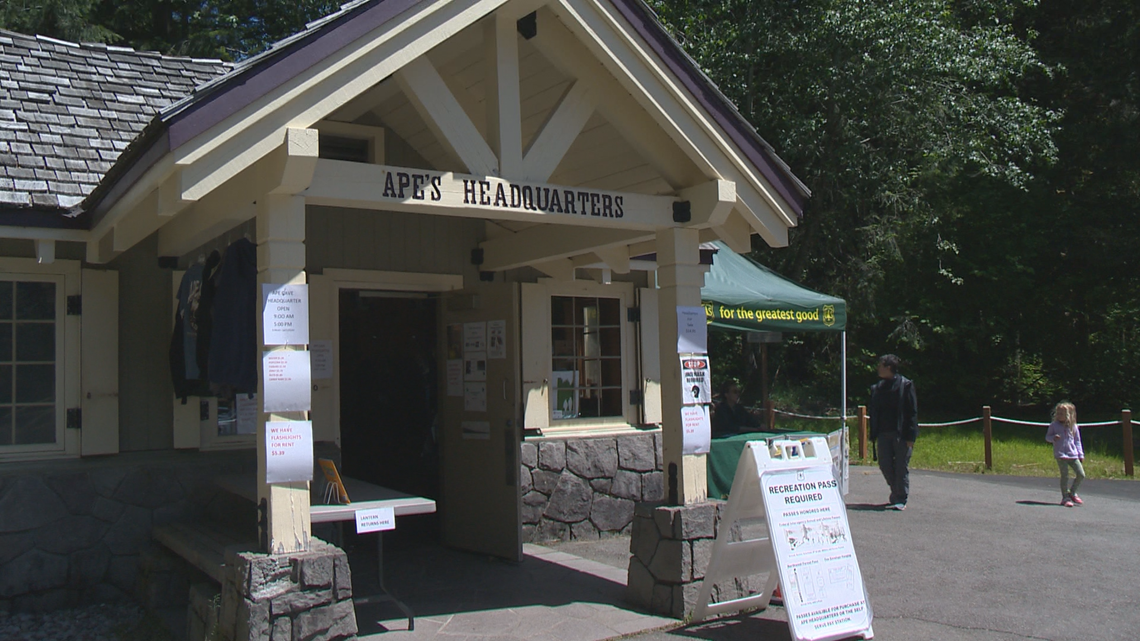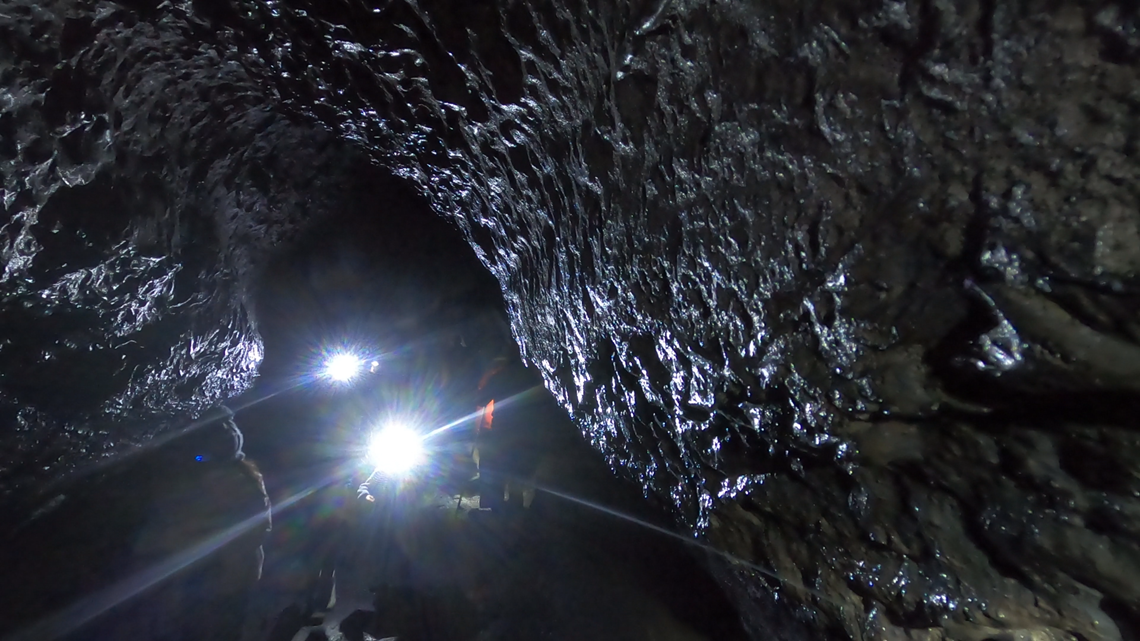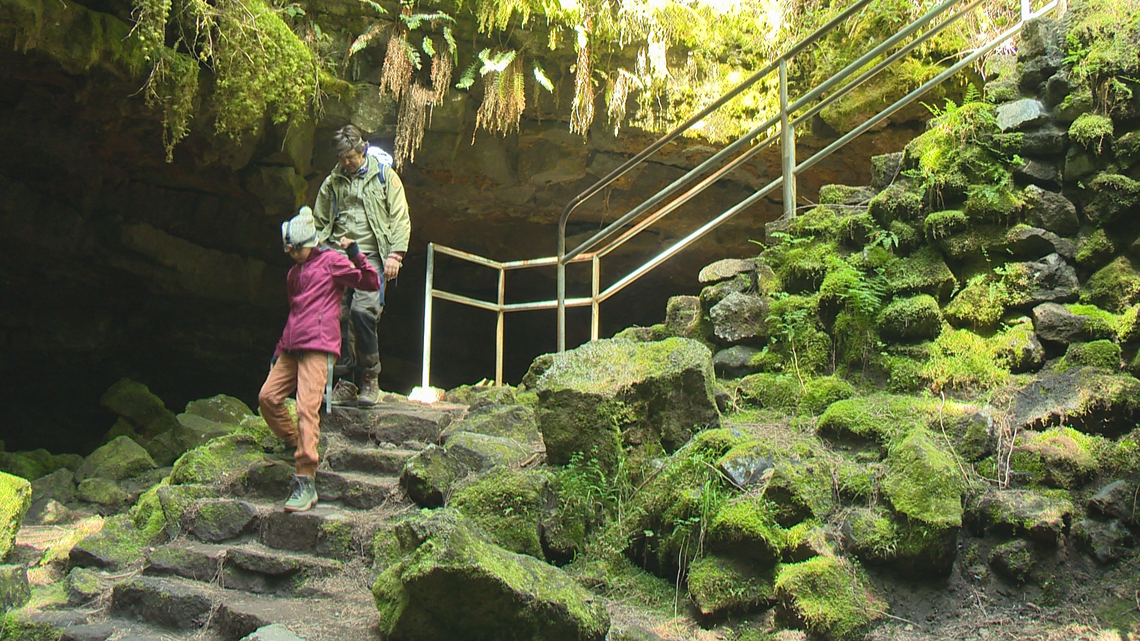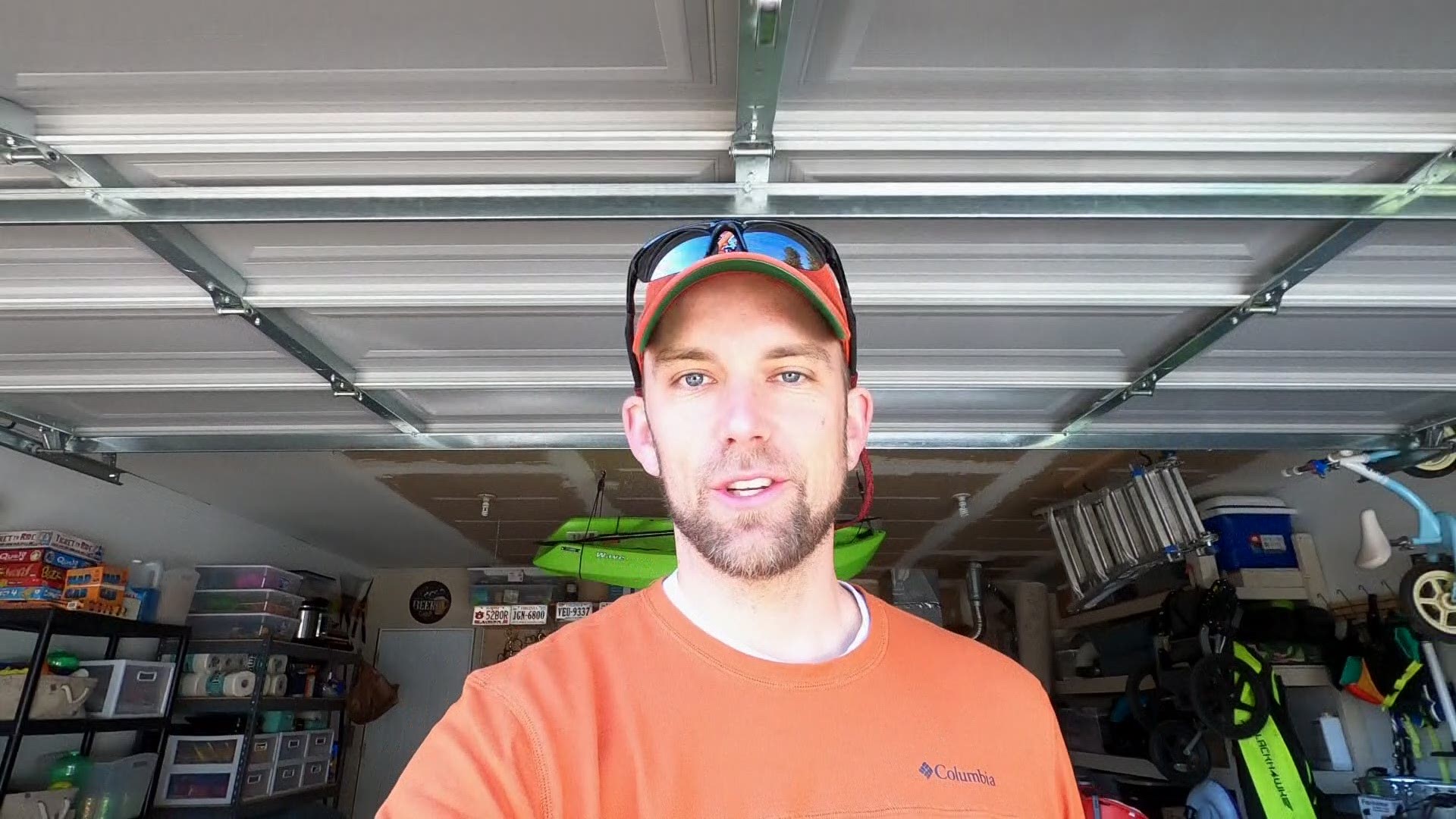WASHINGTON — In this week's Let's Get Out There, we're headed to the Gifford Pinchot National Forest to check out the popular attraction, Ape Cave. If you’re planning a visit, make sure you’re aware of changes to the site before you go.
From the Metro area, hop in the car and it doesn’t take long before you’re out of the city and into the forest. A two hour drive can put you in the middle of the Gifford Pinchot National Forest, the outdoor playground around Mount St. Helens.
The Ape Cave isn't as crowded now as it's been in the past.
“You don't have to park on the side of the road. It's a pleasant place to be now, even on weekends,” said Trevor Ness, the lead interpretive park ranger for the south side of Mount St. Helens.


”Prior to 2020 it wasn't uncommon for us to have a Saturday where we counted over 1,000 people here during the day. On holiday weekends it was more like 1,400,” he said.
Ape Cave is the longest known lava tube in North America, with two possible routes. An upper cave is more advanced than the lower cave, which is kid-friendly. The cave was closed in 2020 and finally reopened on May 18, 2021—the 41st anniversary of Mount St. Helens’ 1980 eruption.
“Ape Cave was formed by an eruption of Mount St. Helens that happened about 2000 years ago,” said Ness. “Mount St. Helens was going through a phase where it was behaving a lot more like Hawaiian volcano, rather than its 1980 explosive eruption kind of behavior.”


Before you head out, there are some things you should know.
“Ape Cave is 42 degrees, all the time. It's cold, even when it's 100 degrees out. It's 42 down there so bring a jacket,” Ness said.
“It's total darkness. You're going to want to bring as much light as you can and wear good shoes is another really important thing to remember.”
Something new for this year is a reservation system to keep crowds down and for environmental effects. You’ll need to get a ticket online before your visit. Tickets are limited and only one is needed per vehicle.
“Everyone that I've talked to so far here who's gotten their reservation made to the cave and come back out, they've told me that they've enjoyed it,” said Ness.


He added unlike trails on the surface, human impacts inside caves are mostly permanent.
“One of the big ones that people don't realize is that on the walls of Ape Cave is a living organism called cave slime,” he said. “It's like the base of the food chain for the ecosystem inside of the cave, and it's really sensitive to being touched. So we ask that when you're in Ape Cave or really any other lava tube, you don't touch the walls of the cave.”
As for how Ape Cape got its name? If you don’t know, the signs near the entrance will tell you. We’ll let you discover that for yourself if you visit.
Let's Get Out there airs once a week on KGW's 4 p.m. newscast and The Good Stuff, which airs at 7 p.m. We're including viewers photos for this series. You can text your photos to 503-226-5088 or post them on the KGW Facebook page.

